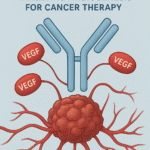Pharmacy Practice MCQ, in this article we will solve, Practice MCQ under subject physical pharmaceutics. Read following article for your reference.
Critical Solution Temperature (CST) And Distribution Law » PHARMACAREERS
- What is the Critical Solution Temperature (CST)?
- A) The temperature at which two immiscible liquids become partially miscible
- B) The temperature at which two partially miscible liquids become completely miscible
- C) The temperature at which a solid dissolves in a liquid
- D) The temperature at which a gas dissolves in a liquid
- Which of the following is true about Upper Critical Solution Temperature (UCST)?
- A) It is the lowest temperature at which phase separation occurs
- B) It is the highest temperature at which phase separation occurs
- C) It is the temperature at which a solid melts
- D) It is the temperature at which a gas liquefies
- What does LCST stand for?
- A) Lower Critical Solution Temperature
- B) Lowest Critical Solution Temperature
- C) Liquid Critical Solution Temperature
- D) Limited Critical Solution Temperature
- At what point does the Gibbs free energy change for mixing become zero?
- A) At the melting point
- B) At the boiling point
- C) At the Critical Solution Temperature
- D) At the freezing point
- Which phase diagram shape is typically associated with UCST?
- A) Dome-shaped curve
- B) Linear curve
- C) Exponential curve
- D) Parabolic curve
- What is the primary factor affecting CST?
- A) Pressure
- B) Temperature
- C) Volume
- D) Concentration
- What does the distribution law state?
- A) A solute will distribute itself between two immiscible solvents in a constant ratio at a given temperature
- B) A solute will distribute itself between two miscible solvents in a constant ratio at a given temperature
- C) A solute will distribute itself between two immiscible solvents in a variable ratio at a given temperature
- D) A solute will distribute itself between two miscible solvents in a variable ratio at a given temperature
- Which of the following is NOT a type of CST?
- A) UCST
- B) LCST
- C) MCST
- D) None of the above
- What is the significance of CST in pharmaceutics?
- A) Optimizing formulations
- B) Ensuring drug solubility
- C) Creating stable emulsions
- D) All of the above
- What does a phase diagram plot?
- A) Temperature against pressure
- B) Temperature against composition
- C) Pressure against volume
- D) Volume against composition
- Which system is commonly used to study CST?
- A) Water-oil system
- B) Phenol-water system
- C) Alcohol-water system
- D) Ether-water system
- What happens to two liquids at the CST?
- A) They become completely immiscible
- B) They become completely miscible
- C) They form a solid
- D) They evaporate
- What is the role of enthalpy change (ΔH) in determining CST?
- A) It has no role
- B) It determines the pressure
- C) It influences the temperature
- D) It influences the volume
- What does the term ‘partially miscible’ mean?
- A) Liquids that do not mix at all
- B) Liquids that mix in all proportions
- C) Liquids that mix in limited proportions
- D) Liquids that form a solid
- Which of the following is a limitation of the distribution law?
- A) It applies only to gases
- B) It applies only to solids
- C) It applies only to immiscible liquids
- D) It applies only to miscible liquids
- What is the effect of temperature on the distribution ratio?
- A) It remains constant
- B) It decreases with temperature
- C) It increases with temperature
- D) It varies with temperature
- Which of the following is an application of the distribution law?
- A) Drug absorption
- B) Bioavailability
- C) Formulation design
- D) All of the above
- What does the term ‘miscible’ mean?
- A) Capable of being mixed
- B) Incapable of being mixed
- C) Capable of being dissolved
- D) Incapable of being dissolved
- What is the significance of phase diagrams in CST?
- A) They show the regions of miscibility and immiscibility
- B) They show the regions of solubility and insolubility
- C) They show the regions of stability and instability
- D) They show the regions of reactivity and non-reactivity
- What is the primary use of CST in drug formulation?
- A) To determine the melting point
- B) To optimize drug solubility
- C) To measure drug potency
- D) To assess drug stability
- Which of the following factors does NOT affect CST?
- A) Temperature
- B) Pressure
- C) Volume
- D) Concentration
- What is the role of entropy change (ΔS) in determining CST?
- A) It has no role
- B) It determines the pressure
- C) It influences the temperature
- D) It influences the volume
- What is the relationship between CST and Gibbs free energy change (ΔG)?
- A) ΔG is always positive at CST
- B) ΔG is always negative at CST
- C) ΔG is zero at CST
- D) ΔG is infinite at CST
- What is the effect of pressure on CST?
- A) It remains constant
- B) It decreases with pressure
- C) It increases with pressure
- D) It varies with pressure
- Which of the following is true about LCST?
- A) It is the highest temperature at which phase separation occurs
- B) It is the lowest temperature at which phase separation occurs
- C) It is the temperature at which a solid melts
- D) It is the temperature at which a gas liquefies
- What is the significance of the phenol-water system in CST studies?
- A) It is a common example used to study CST
- B) It is used to measure drug potency
- C) It is used to assess drug stability
- D) It is used to determine melting points
- What does the term ‘immiscible’ mean?
- A) Capable of being mixed
- B) Incapable of being mixed
- C) Capable of being dissolved
- D) Incapable of being dissolved
- What is the primary factor influencing the distribution ratio?
- A) Temperature
- B) Pressure
- C) Volume
- D) Concentration
- What is the role of CST in creating stable emulsions?
- A) It determines the melting point
- B) It ensures complete miscibility
- C) It measures drug potency
- D) It assesses drug stability
- Which of the following best describes the distribution law?
- A) It applies to miscible liquids
- B) It applies to immiscible liquids
- C) It applies to solids
- D) It applies to gases
For more regular updates you can visit our social media accounts,
Instagram: Follow us
Facebook: Follow us
WhatsApp: Join us
Telegram: Join us



